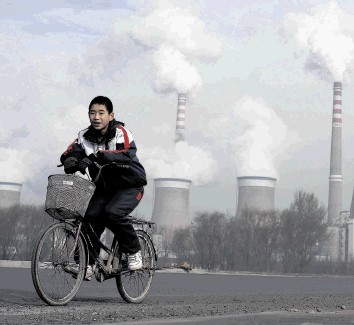
The United States and China have advanced policies to limit CO2 emissions, ahead of next month’s COP21 carbon emmissions conference in Paris.
The US Energy Information Administration reports that China and the United States are the two countries with the most energy-related carbon dioxide (CO2) emissions, together accounting for about 40% of global emissions in 2012.
Both countries last year announced intended nationally determined contributions (INDCs) to mitigate their respective greenhouse gas (GHG) emissions, but there is still uncertainty in each country’s ability to meet those targets.
Further efforts to reduce GHG emissions will be discussed at the United Nations conference.
The United States, which had previously set a goal of reducing GHG emissions by 17% from 2005 levels by 2020, has proposed in its INDC to bring emissions 26% to 28% below the 2005 level by 2025.
China’s INDC proposes to achieve the peaking of its CO2 emissions around 2030, making best efforts to peak early. China’s INDC also proposes 20% non-fossil energy use in that year. In September, China announced its intent to expand the seven regional emissions trading programs to a national cap-and-trade program that begins in 2017, although specific emissions caps and other policy details have yet to be announced.
In the United States, about 80% of all CO2 emissions in 2012 were related to energy, with the remainder attributed to sources such as cement production, agricultural activities, land use changes, and forestry.
China surpassed the United States as the world’s largest CO2 emitter in 2008. In 2012, China’s per capita CO2 emissions were about one-third the U.S. level, while its emissions per unit of economic output were about 70% more than the United States.
In the United States, two of the largest sources of energy-related CO2 emissions are the transportation and electric power sectors. For transportation, the main mechanism for reducing emissions is the increasing stringency of fuel economy and GHG emissions standards, both for light-duty vehicles and heavy trucks.
The US Environmental Protection Agency (EPA) finalised the Clean Power Plan (CPP) aimed at significantly reducing CO2 emissions from existing fossil-fueled generators.
The EIA states: “In China, the ultimate achievement of emissions targets will depend on its need to balance environmental goals with economic growth and development.
“Chinese energy demand growth has historically been driven by five-year planning cycles and has centered mainly on industrial energy demand. China is still industrializing, and its energy needs will grow despite slowing economic growth and a shift to less energy-intensive industries.”
Recommended for you
